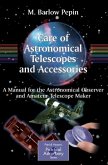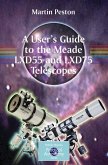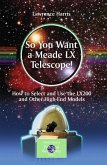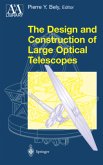Four hundred years ago, on 25 September 1608, the lens maker Hans Lipperhey from Middelburg in the Netherlands traveled to The Hague to apply for a patent regarding his invention of the "spyglass". The Commander in Chief of the Dutch armed forces, Prince Maurice of Nassau, was quite impressed. However, since the instrument could be easily copied, Lipperhey was not granted the patent. Nevertheless, within a year Galileo Galilei aimed a telescope that he had built based on the principals of Lipperhey's device on the skies, forever changing the way astronomy was done.
To celebrate the invention of the telescope and the resulting developments, Leiden Observatory, in cooperation with ESTEC, organized an international meeting on "400 Years of Astronomical Telescopes". The meeting took place from 29 September - 2 October 2008 at the ESTEC conference centre. This book presents the highlights of this meeting under the following categories: History of Optical Telescopes, Historyof Non-Optical Telescopes, Miscellaneous Aspects and Projects, Fundamental Telescope Technologies, Political and Sociological Aspects, Perspectives for Future Telescopes.
The topical reviews have been written by internationally recognized leaders of the field. This book is intended as a first reference to many technical, historical and social aspects concerning astronomical telescopes. It is equally well suited to professional astronomers as to the interested public.
To celebrate the invention of the telescope and the resulting developments, Leiden Observatory, in cooperation with ESTEC, organized an international meeting on "400 Years of Astronomical Telescopes". The meeting took place from 29 September - 2 October 2008 at the ESTEC conference centre. This book presents the highlights of this meeting under the following categories: History of Optical Telescopes, Historyof Non-Optical Telescopes, Miscellaneous Aspects and Projects, Fundamental Telescope Technologies, Political and Sociological Aspects, Perspectives for Future Telescopes.
The topical reviews have been written by internationally recognized leaders of the field. This book is intended as a first reference to many technical, historical and social aspects concerning astronomical telescopes. It is equally well suited to professional astronomers as to the interested public.
From the reviews:
"This wonderful book, with experts describing telescopes and related astronomical facilities from before Galileo into the twenty-first century, will stand the test of time. ... 400 years of astronomical telescopes is a volume worth reading, having, and keeping." (Jay M. Pasachoff, Journal for the History of Astronomy, Vol. 45, 2014)
"This wonderful book, with experts describing telescopes and related astronomical facilities from before Galileo into the twenty-first century, will stand the test of time. ... 400 years of astronomical telescopes is a volume worth reading, having, and keeping." (Jay M. Pasachoff, Journal for the History of Astronomy, Vol. 45, 2014)








